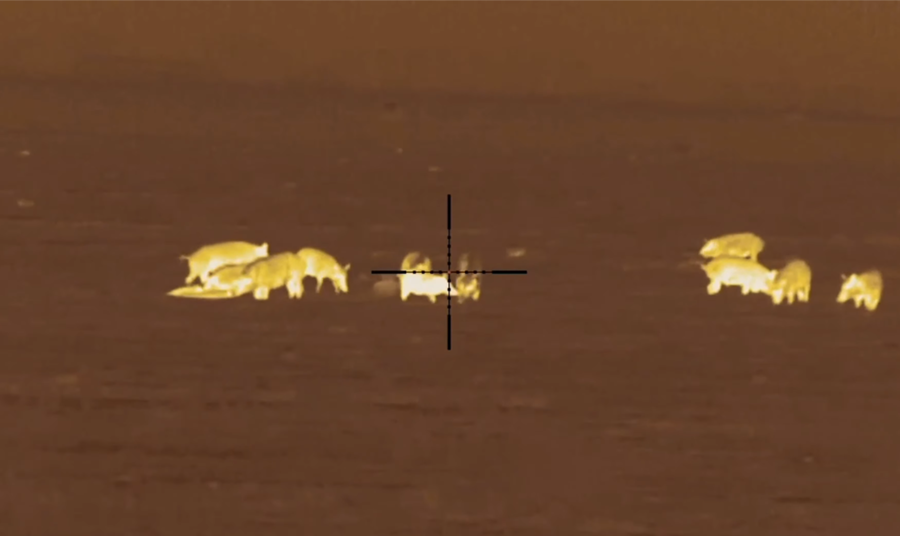For outdoor enthusiasts, hunters, and tactical professionals, navigating the world of advanced optics can be daunting. Two of the most popular technologies used for low-light and no-light environments are night vision and thermal imaging. Each has unique strengths, operational differences, and ideal use cases, but understanding their distinctions can guide users to the right choice for their specific needs.
The Technology Behind the Tools
Night Vision: Night vision devices amplify ambient light, such as starlight or moonlight, to create an image. These devices rely on an image intensifier tube, which collects light and converts photons into electrons, amplifying them to produce a visible image. This process creates the classic green or black-and-white visuals commonly associated with night vision goggles and scopes.
Thermal Imaging: Thermal optics, on the other hand, detect heat rather than light. All objects emit infrared radiation, with hotter objects emitting more. Thermal devices use sensors to capture this radiation and convert it into a heat map or image, distinguishing targets based on their temperature relative to their surroundings. This technology does not require ambient light, making it highly effective in complete darkness.
Key Differences Between Night Vision and Thermal Imaging
Performance in Lighting Conditions
-
Night Vision: Requires some level of ambient light to function. While effective in low-light environments, performance diminishes in complete darkness or during overcast nights. Artificial light sources, such as infrared illuminators, can enhance visibility, but they can also give away the user’s position if opposing forces or hunted animals can see infrared light.
-
Thermal Imaging: Operates independently of light, excelling in total darkness, dense fog, or thick vegetation where light amplification is insufficient.
Target Identification
-
Night Vision: Offers high-resolution imagery, making it easier to identify facial features, clothing, or subtle movements. This makes night vision a strong choice for applications requiring detailed observation. However, its range is often limited by the availability of ambient light, usually maxing out at an average of 300 yards.
-
Thermal Imaging: Highlights heat sources but lacks the finer details. While it’s excellent for detecting animals or people, the inability to see defining features may make identification more challenging at close ranges.
Environmental Adaptability
-
Night Vision: Struggles in environments with excessive ambient light, such as urban settings, where streetlights or headlights can cause glare and wash out the image. Additionally, heavy fog, rain, or smoke can obstruct performance.
-
Thermal Imaging: Excels in obscured environments like smoke, light fog, or rain, as heat signatures are not affected by visual obstructions. However, extreme heat or reflective surfaces, such as water or metal, can interfere with thermal accuracy.
Cost and Accessibility
-
Night Vision: Generally more affordable and widely available. It is often the entry point for those new to low-light optics and is frequently used by hobbyists, security professionals, and hunters.
-
Thermal Imaging: Typically more expensive due to the advanced sensors and processing technology required. Its cost reflects its versatility and capability in adverse conditions.
Choosing the Right Tool for the Job
When deciding between night vision and thermal optics, consider your primary use case. For hunters seeking to track game hidden in dense brush, thermal imaging offers a significant advantage due to its ability to easily distinguish between living things and foliage, defeating natural camouflage. For users needing detailed observation at relatively close range or working in environments with some ambient light, night vision remains a practical choice.
At Pulsar, we’re dedicated to equipping outdoor enthusiasts and professionals with cutting-edge optics designed for diverse applications. Whether you need monoculars, riflescopes, clip-ons, or binoculars, Pulsar provides advanced solutions for all your low-light vision needs.
To shop Pulsar thermal devices, click here.
FAQs
What is the difference between night vision and thermal imaging?
Night vision amplifies ambient light to create an image, while thermal imaging detects heat rather than light.
How do night vision and thermal imaging perform in different lighting conditions?
Night vision requires ambient light, while thermal imaging operates independently of light.
What are the differences in target identification between night vision and thermal imaging?
Night vision offers high-resolution imagery for detailed observation, while thermal imaging highlights heat sources but lacks finer details.
How do night vision and thermal imaging adapt to different environments?
Night vision struggles in environments with excessive ambient light, while thermal imaging excels in obscured environments.
What are the cost and accessibility differences between night vision and thermal imaging?
Cost and accessibility vary for night vision and thermal imaging technologies.




